About
We aim at understanding how physical forces and molecular control modules cooperate to drive biological function.
We develop new technologies to map and perturb the main physical properties that determine how cells and tissues grow, move, invade and remodel.
By combining this physical information with systematic molecular perturbations and computational models we explore the principles that govern the interplay between chemical and physical cues in living tissues.
We study how these principles are regulated in physiology and development, and how they are derailed in cancer and aging.
Making cellular forces visible
To study cell and tissue dynamics we develop new technologies to measure physical forces at the cell-cell and cell-matrix interface. By combining these technologies with computational analysis of cell shape and velocity we obtain a full experimental characterization of epithelial dynamics during tissue growth, wound healing and cancer cell invasion.
Tumour invasion by stromal forces
Cancer cell invasion and metastasis remain the leading cause of death in patients with cancer. Both processes are the result of a complex interaction between tumor cells and their microenvironment. One of our main lines of research is to study how tumours exploit the functions of non-cancer cells in their microenvironment to invade and metastasize. We focus on the interaction between epithelial cancer cells and Cancer Associated Fibroblasts (CAFs), the most abundant cell type in the tumour stroma.
Optogenetics to control cell mechanics
The recent development of optogenetic technologies offers promising possibilities to control signalling pathways with high spatiotemporal resolution. By expressing genetically encoded light-sensitive proteins, optogenetic technology enables the reversible perturbation of intracellular biochemistry with subcellular resolution. We have developed optogenetic tools based on controlling the activity of endogenous RhoA to upregulate or downregulate cell contractility and to control cell shape and mechanotransduction.
Collective durotaxis: a mechanism for cellular guidance by mechanical cues
Directed cell migration is one of the earliest observations in cell biology, dating back to the late XIX century. Also known as taxis, directed cell migration has been commonly associated with chemotaxis, i.e. the ability of a broad variety of cell types to migrate following gradients of chemical factors. We recently demonstrated a new mode of collective cell guidance by mechanical cues, called collective durotaxis. This new migration mode emerges only in cell collectives and, strikingly, does not require isolated cells to exhibit gradient sensing.
Organoid mechanobiology
Organoids are large multicellular structures that self-organize in vitro and maintain a similar organization and functionality than the organ from which they are derived. Organoids from many organs have now been obtained from embryonic stem cells, induced pluripotent stem cells and organ progenitors. We use intestinal and kidney organoids to study how epithelia adopt three-dimensional shapes that closely resemble their structure in vivo. We also use organoids grown from primary tumors to understand how epithelial structure and function are lost with disease progression.
Engineering epithelial shape and mechanics from the bottom up
We develop new approaches to engineer epithelia in 3D. Using these approaches, we study the principles that govern the emergence of tissue shape from the bottom up. We recently found that epithelial sheets can stretch up to four times their initial area without breaking, and that they are able to recover their initial size in a fully reversible way when unstretched. Surprisingly, some cells in the tissue barely stretch, while others become ‘superstretched’, increasing their area more than ten times. We call this phenomenon ‘active superelasticity’.
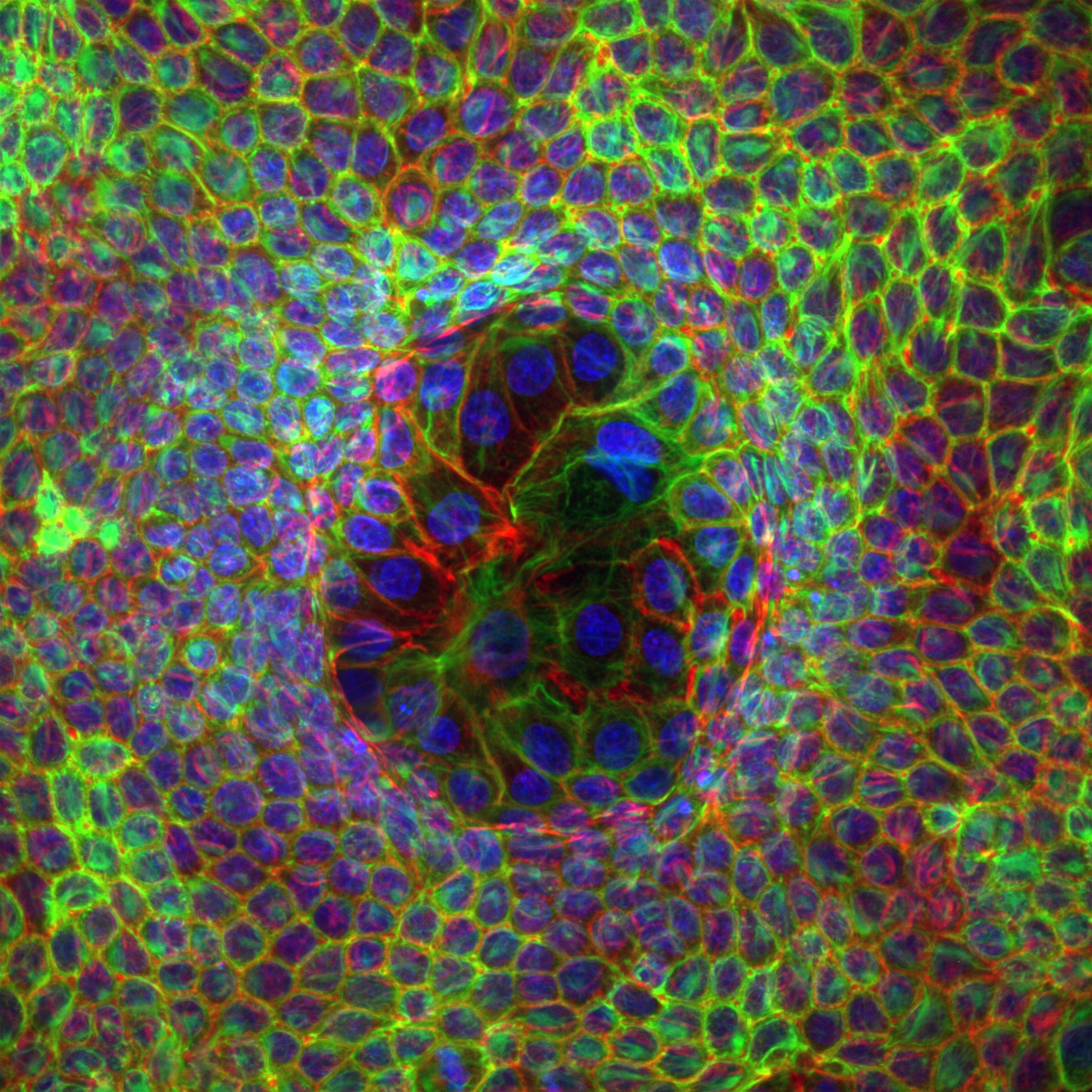

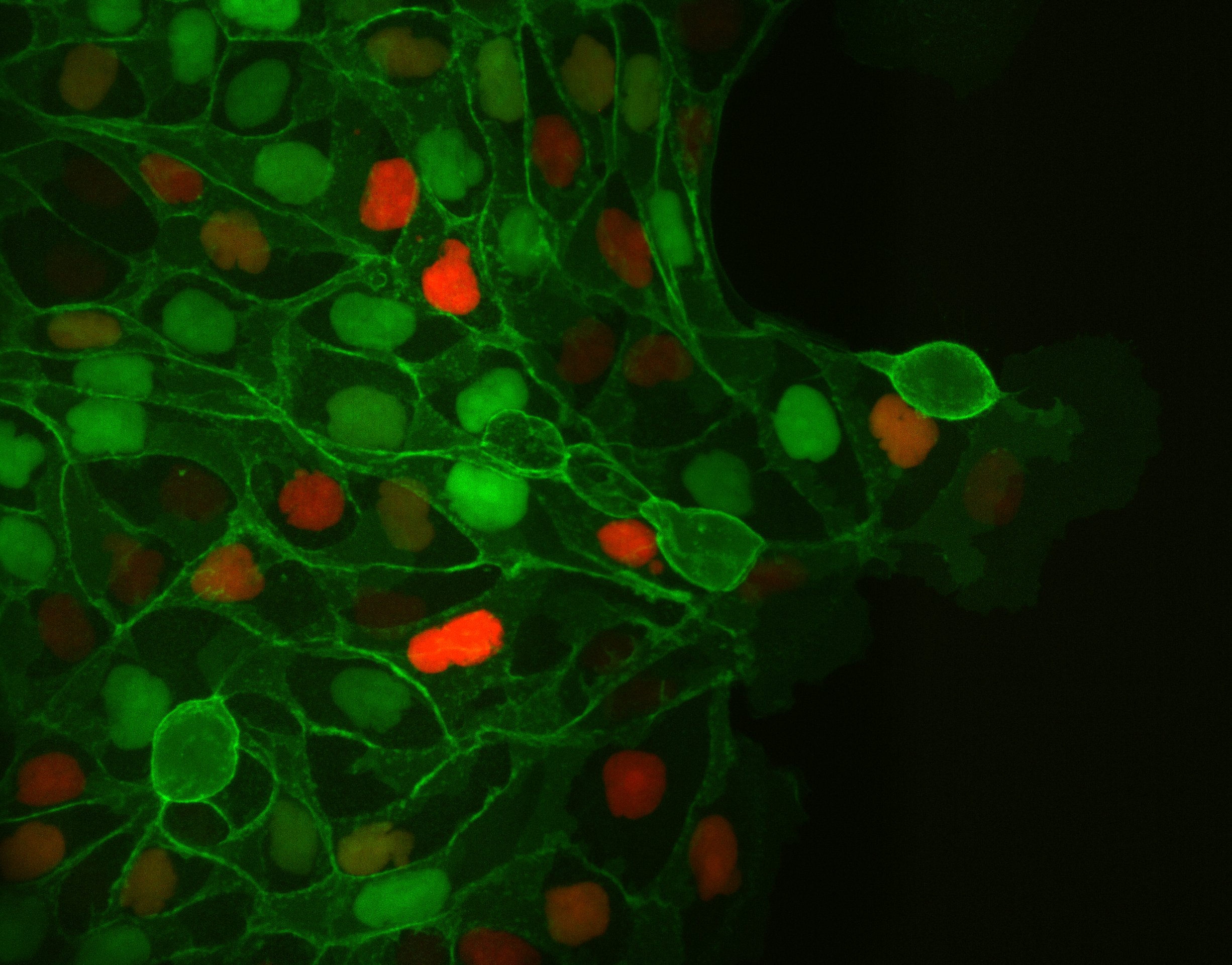
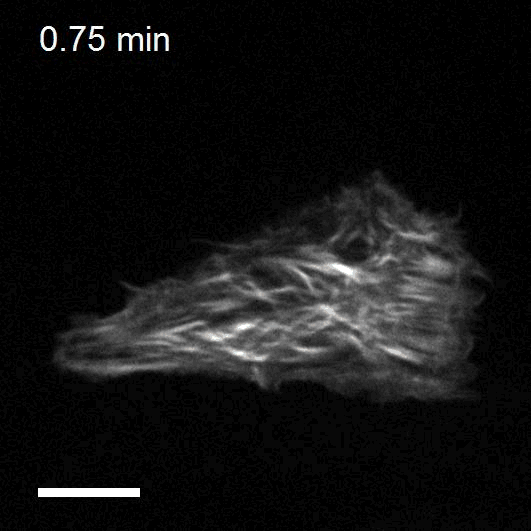
Staff
Xavier Trepat
Projects
| NATIONAL PROJECTS | FINANCER | PI |
|---|---|---|
| mGRADIENTMecanobiología de la migración colectiva durante la haptotaxis y la durotaxis: aplicación a los organoides intestinales (2019-2022) | MICIU Generación Conocimiento: Proyectos I+D | Xavier Trepat |
| DYNAGELHidrogeles biocompatibles con rigidez dinámicamente ajustable para estudiar la mecanobiología de células y tejidos (2019-2022) | MICIU Retos investigación: Proyectos I+D | Raimon Sunyer |
| INTERNATIONAL PROJECTS | FINANCER | PI |
|---|---|---|
| EpiFold Engineering epithelial shape and mechanics: from synthetic morphogenesis to biohybrid devices (2021-2025) | European Commission, ERC-AdG | Xavier Trepat |
| The role of intermediate filaments in stress resistance in 3D epithelial structures (2021-2023) | Deutsche Forschungsgemeinschaft (DFG), Walter Benjamin-Programme | Tom Golde |
| Mechano·Control Mechanical control of biological function (2017-2022) | European Commission, FET Proactive | Xavier Trepat |
| Control of cell collective flows and tissue folding by means of surface patterns (2021-2022) | Human Frontier Science Program, HFSP Beca postdoctoral | Pau Guillamat |
| PRIVATELY-FUNDED PROJECTS | FINANCER | PI |
|---|---|---|
| Mech4Cancer · Enabling technologies to map nuclear mechanosensing: from organoids to tumors (2020-2023) | Obra Social La Caixa: Health Research Call | Xavier Trepat |
| T cell exclusion during cancer immune evasion and immunotherapy failure: cell types, transcriptional programs and biomechanics (2020-2023) | Fundació La Marató de TV3 | Xavier Trepat |
| Joint Programme Healthy Ageing | Obra Social La Caixa | Xavier Trepat |
| Understanding and measuring mechanical tumor properties to improve cancer diagnosis, treatment, and survival: Application to liquid biopsies (2017-2022) | Obra Social La Caixa | Xavier Trepat |
| FINISHED PROJECTS | FINANCER | PI |
|---|---|---|
| OPTOLEADER Optogenetic control of leader cell mechanobiology during collective cell migration (2019-2021) | European Commission, MARIE CURIE – IF | Leone Rossetti |
| MECHANOIDS Probing and controlling the three-dimensional organoid mechanobiology (2019-2021) | European Commission, MARIE CURIE – IF | Manuel Gómez |
| TensionControl Multiscale regulation of epithelial tension (2015-2020) | European Commission, ERC – CoG | Xavier Trepat |
| El mecanoma de la adhesión epitelial: mecanismos de detección, resistencia y transmisión de fuerzas intercelulares | MINECO, I+D-Investigación fundamental no orientada | Xavier Trepat |
| MICROGRADIENTPAGE Micro Gradient Polyacrylamide Gels for High Throughput Electrophoresis Analysis | European Commission, ERC-PoC | Xavier Trepat |
| GENESFORCEMOTION Physical Forces Driving Collective Cell Migration: from Genes to Mechanism | European Commission, ERC-StG | Xavier Trepat |
| CAMVAS Coordination and migration of cells during 3D Vasculogenesis (2014-2017) | European Commission, MARIE CURIE – IOF | Xavier Trepat |
| DUROTAXIS Mecanobiología de la durotaxis: de las células aisladas a los tejidos | MINECO, Proyectos I+D Excelencia | Xavier Trepat |
Publications
Equipment
- Soft Lithography
- Micro/Nano fabrication
- Cell stretching
- Live Confocal Microcopy
- Magnetic Tweezers
- Magnetic Twisting Cytometry
- Monolayer stress microscopy
- Traction microscopy
Collaborations
- Julien Colombelli / Eduard Batlle
Institute for Research in Biomedicine (IRB) Barcelona - Marino Arroyo
Universitat Politècnica de Catalunya, Barcelona - Guillaume Charras / Roberto Mayor
University College London, UK - Erik Sahai
Cancer Research, UK - Benoit Ladoux
Université Paris 7, France - Jim Butler & Jeff Fredberg
Harvard University, Boston - Danijela Vignjevic
Institut Curie, Paris - Jonel Trebicka
Department of Internal Medicine I, University Hospital Frankfurt - Eduard Batlle
Institute for Research in Biomedicine (IRB) Barcelona
News
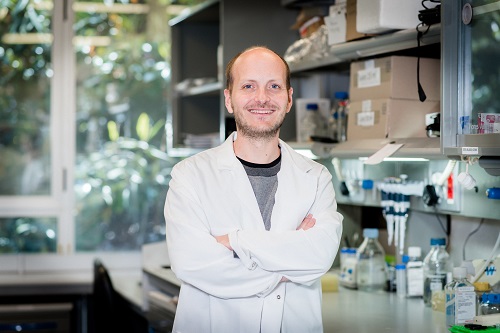
El investigador Xavier Trepat recibe la ERC Advanced Grant para crear las bases de una nueva generación de robots biológicos
El investigador del Instituto de Bioingeniería de Catalunya (IBEC), Xavier Trepat, ha recibido la prestigiosa beca ERC Advanced Grant, otorgada por el Consejo Europeo de Investigación (ERC) y dotada con 2,5 millones de euros. El experto y su grupo destinarán estos recursos a estudiar las propiedades mecánicas del epitelio en 3D y a sentar las bases de una tecnología pionera llamada «Epifluídica», que permitirá diseñar robots biológicos.

El reto de la escoba
Xavier Trepat revela al diari Ara el secret darrere del famós repte de l’escombra.
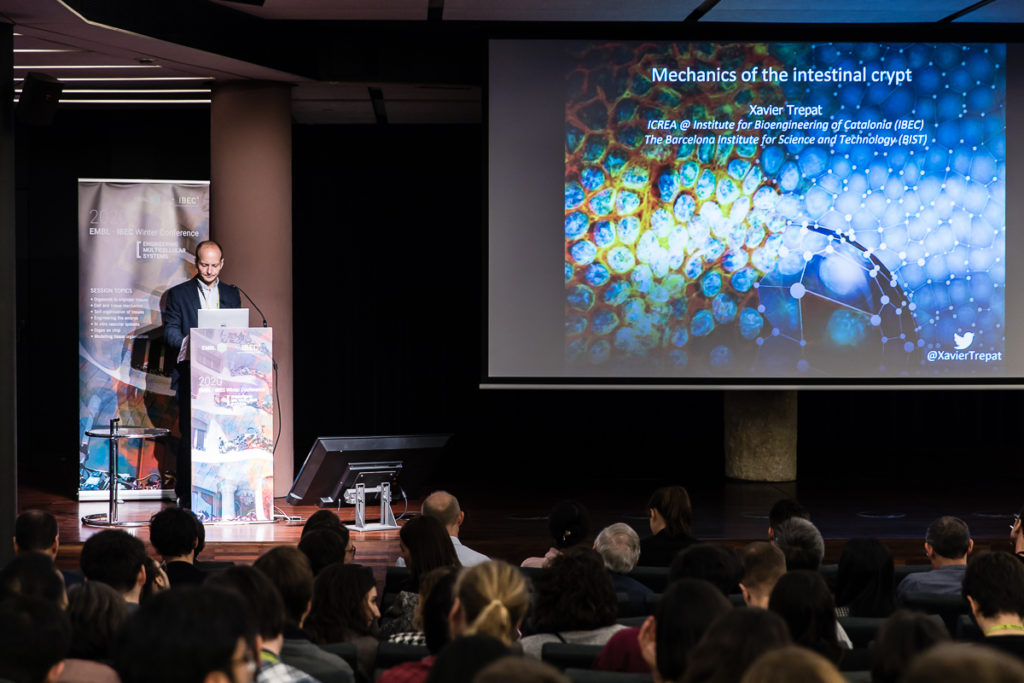
«La revolución silenciosa de los miniórganos» Xavier Trepat en el diario ARA
Durante la EMBL-IBEC Winter Conference celebrada el pasado 10-12 de febrero en la Pedrera, Xavier Trepat, investigador principal en el IBEC, fue entrevistado para el diario ARA.

La EMBL-IBEC Winter Conference se clausura con un gran éxito de participación
La conferencia organizada por el Instituto de Bioingeniería de Cataluña (IBEC) y el Laboratorio Europeo de Biología Molecular (EMBL) reunió esta semana en La Pedrera de Barcelona a un total de 200 expertos internacionales en el campo de la bioingeniería. En la inauguración del evento, que corrió a cargo de la alcaldesa de Barcelona Ada Colau, se destacó la consolidación de Barcelona como centro internacional de investigación y conocimiento.
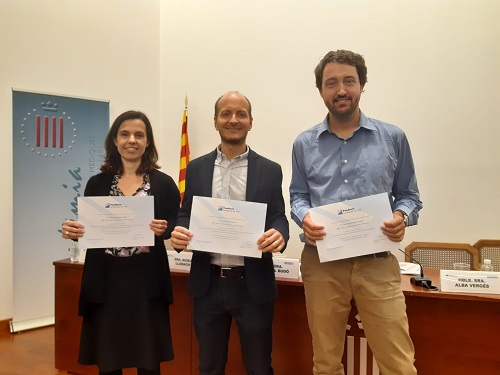
El IBEC recibe financiación para tres proyectos de la mano de la Marató 2018
Tres proyectos en los que participa el IBEC han sido seleccionados para recibir financiación de La Marató 2018 «Contra el cáncer». Uno de los proyectos es liderado por el investigador Pere Roca-Cusachs y los otros dos son co-liderados por los investigadores Xavier Trepat y Núria Montserrat. La ceremonia de entrega de los diplomas acreditativos tuvo lugar el 30 de octubre en el Auditorio de la Academia de Ciencias Médicas y de la Salud de Cataluña y de Baleares. En esta edición se han escogido 43 proyectos de los 188 evaluados por un comité de expertos en cáncer de ámbito internacional, en función de su excelencia, metodología y relevancia.

Las células de dos núcleos podrían ser la clave en la regeneración de corazón
Un equipo de investigadores del IBEC liderado por Xavier Trepat, en colaboración con el CMRB, han descubierto un mecanismo que genera células de dos núcleos. Este mecanismo, que se ha identificado durante la regeneración del corazón del pez cebra, podría estar asociado al extraordinario poder regenerativo de este animal.Después de una lesión aguda, como un infarto de miocardio, el corazón humano es incapaz de regenerarse. Las células cardíacas adultas no pueden crecer y dividirse para sustituir a las dañadas, y la lesión se vuelve irreversible. Pero esto no pasa en todos los animales. Un pez de agua dulce originario del Sudeste Asiático, conocido como pez cebra, puede regenerar su corazón por completo incluso después de la amputación del 20% de su ventrículo.
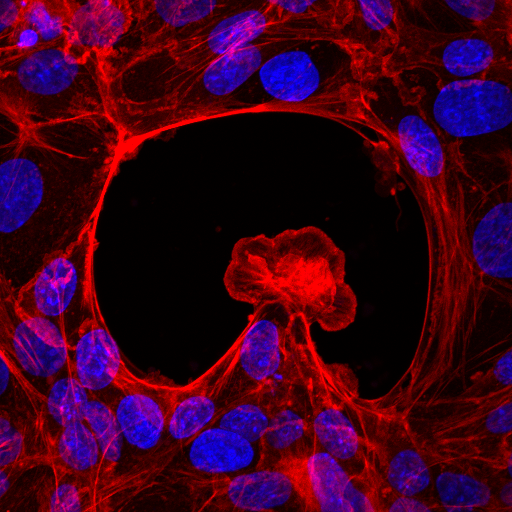
Nuevo avance en el conocimiento sobre el cambio de flujo de actina en la migración celular
La migración celular es un proceso biológico esencial que conduce la formación de tejidos y órganos durante el desarrollo embrionario que también ayuda a proteger el cuerpo a través de la respuesta inmunitaria y los mecanismos de cicatrización de heridas. Los cambios en la forma necesarios para la migración celular dependen de la organización dinámica y la generación de fuerzas del citoesqueleto de actomiosina interno de la célula, que está formado por filamentos de actina estructurales y proteínas motoras contráctiles de miosina. La reorganización de estos componentes permite dos mecanismos de migración celular.
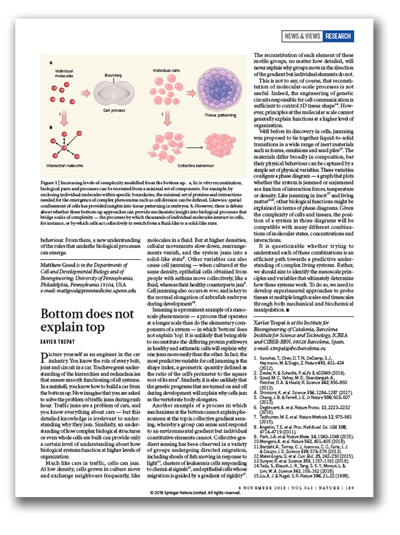
¿El enfoque ascendente es suficiente para entender todo un sistema?
Xavier Trepat, investigador principal de IBEC, ha publicado un artículo de opinión en la sección News and Views (Noticias y Opinión) del último número de la revista Nature, dedicado a la «Biología ascendente». En su artículo «Bottom does not explain top» («El nivel inferior no explica el nivel superior»), Xavier argumenta que entender cómo se construyen las estructuras biológicas complejas —o incluso las células como un todo—, sólo aporta una cierta idea de cómo funcionan los sistemas biológicos en niveles superiores de organización. Hay muchas variables, como por ejemplo la densidad, o incluso las patologías que puede sufrir un sujeto, que afectan al comportamiento celular a nivel de mesoescala, es decir, a largo plazo, a una escalera más sistémica que la de los componentes individuales de un organismo.
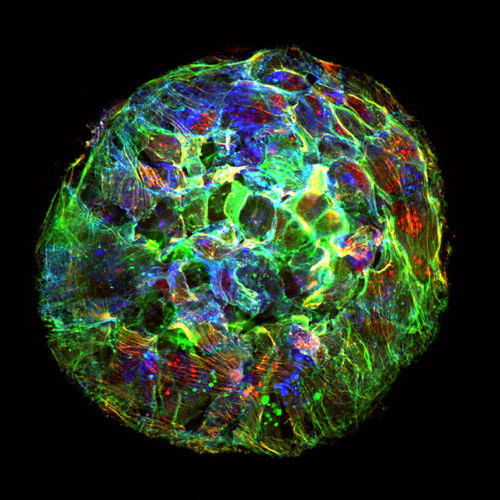
La expansión de células tumorales desafía la física actual
Investigadores del IBEC y la UB descubren que la expansión de células tumorales no obedece las leyes de la física tal y como están formuladas actualmente. Este descubrimiento está impulsado por la Fundación Bancaria “la Caixa”. En un artículo publicado hoy en la revista Nature Physics, los investigadores reformulan estas leyes y desarrollan un nuevo marco que puede contribuir a predecir las condiciones en las que los tumores inician la metástasis.

 ibecbarcelona.eu
ibecbarcelona.eu